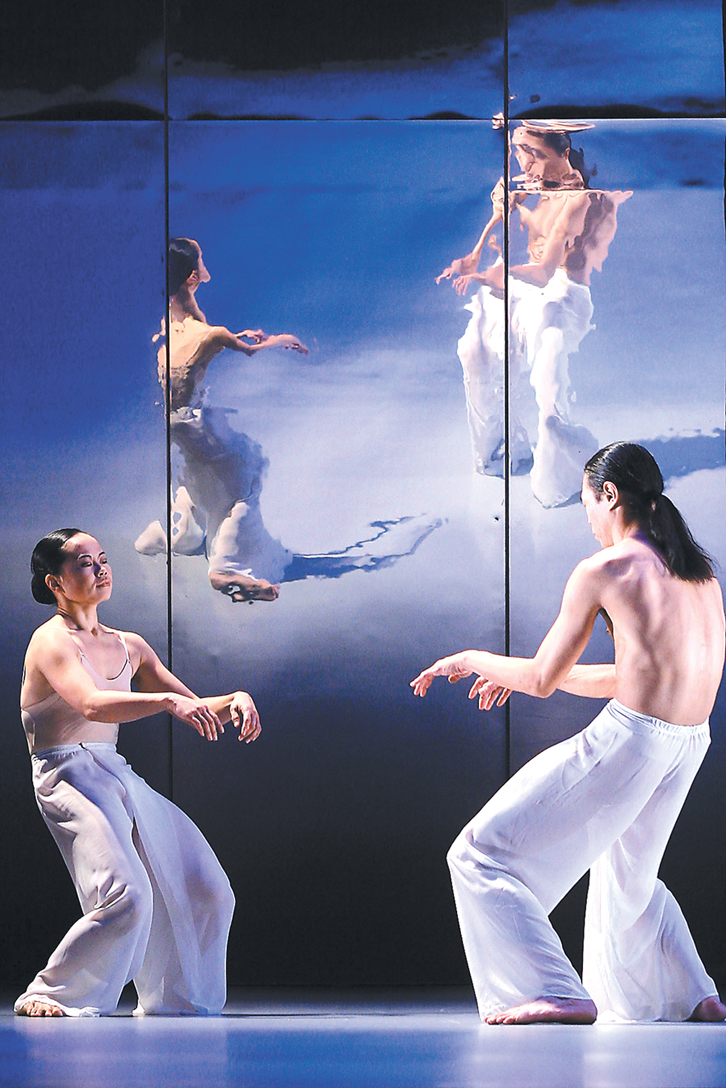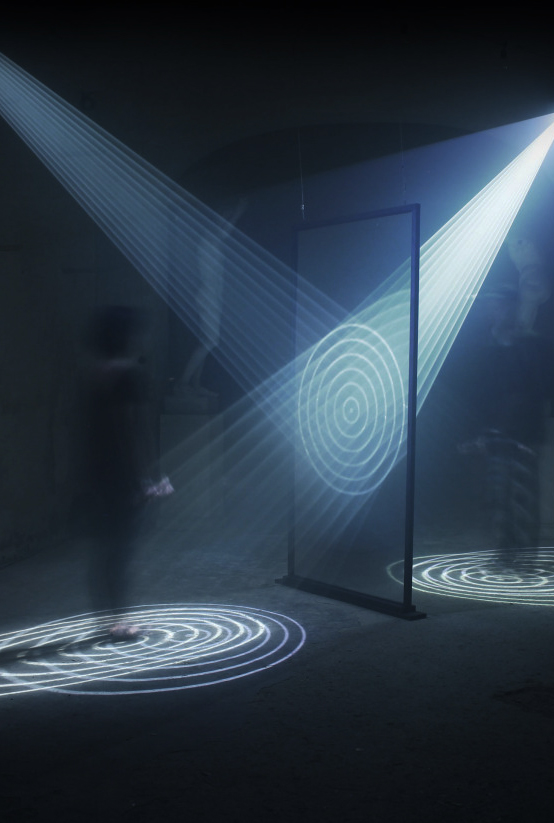
TOSHIO IWAI
Piano
Iwai’s Piano — As Image Media (1995), a later sound work, is related to these early interactive experiments. Here the user, seated at the piano, triggers a flow of images that depress the piano’s keys; a consequence of this action releases yet another flight of images. The resulting interactive installation synthesizes two different aesthetics: sounds (simple melodies), images and a mechanical object (the piano) with digital media. A projected score and computer-generated imagery transform the piano into image media, hence the work’s name. Sound is the triumphant component in these works, for it activates and shapes the visual work. But the visual aspect of Iwai’s installations is lovely. His interactive systems appeal to the creative impulses of adults and children alike with their celebration of animation, computer potential, and the joy of sound.07



